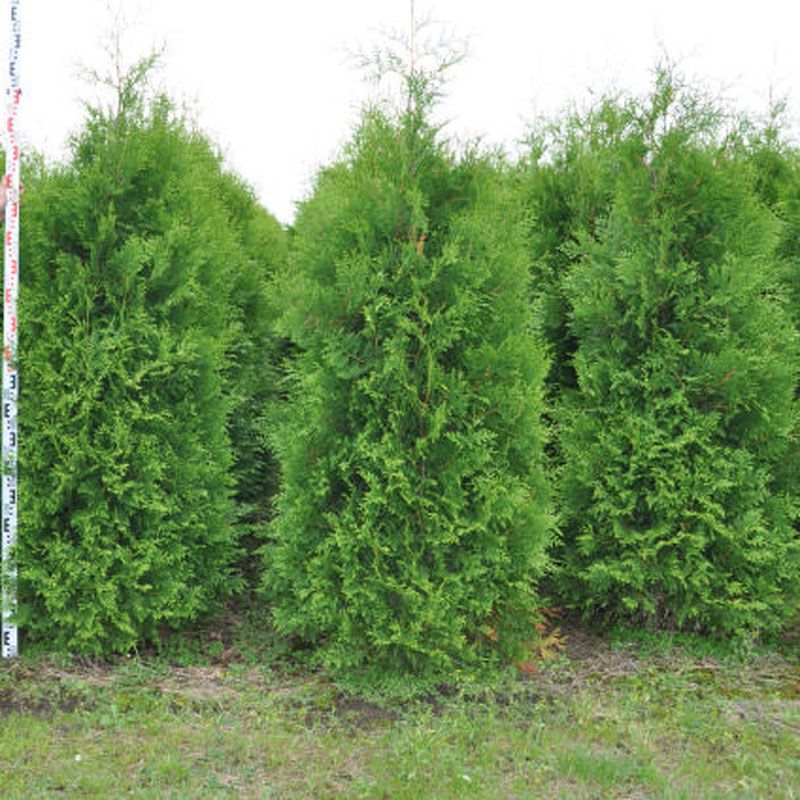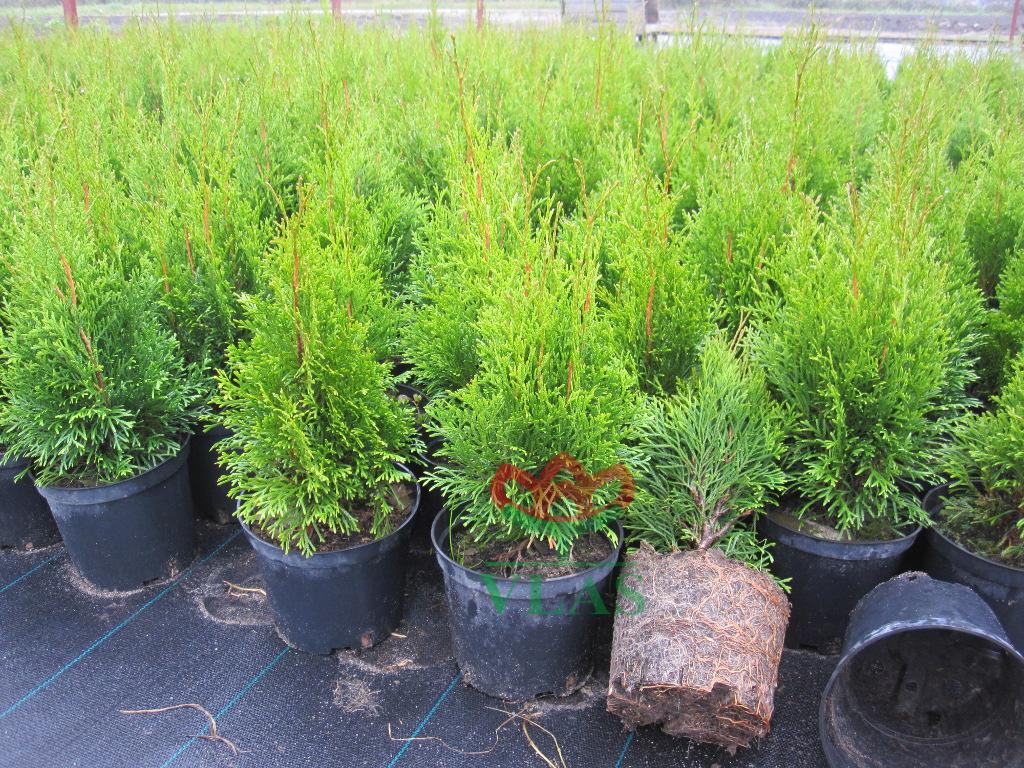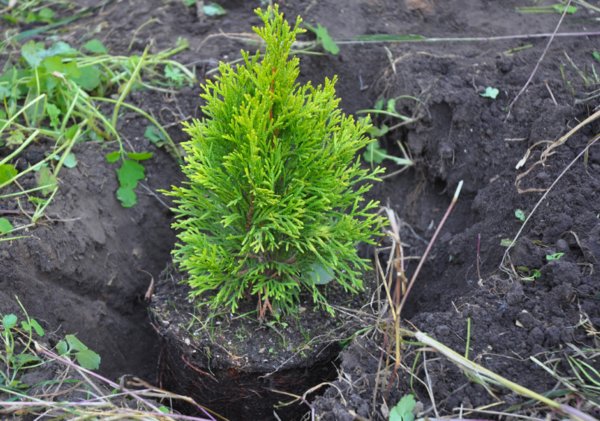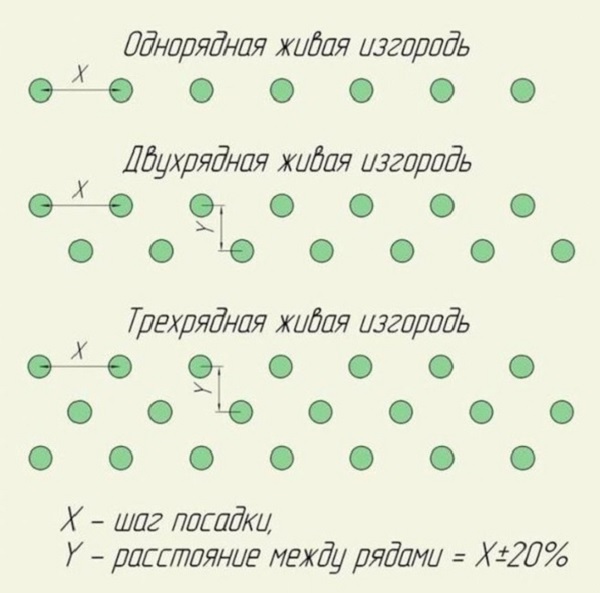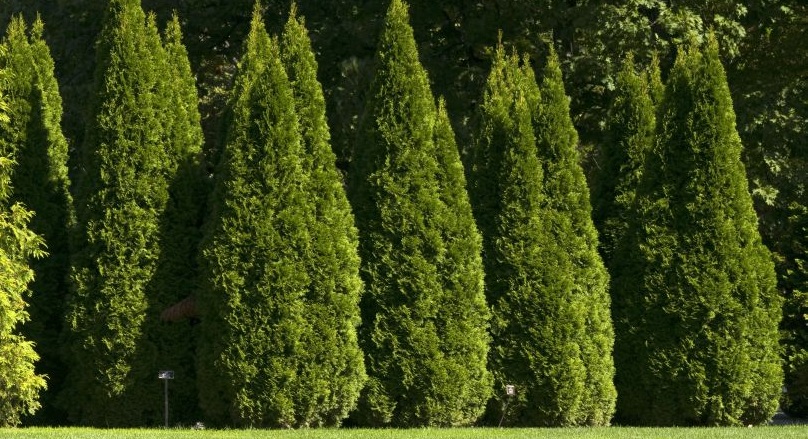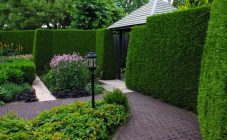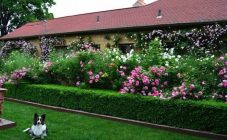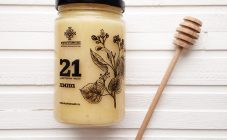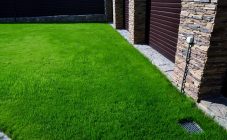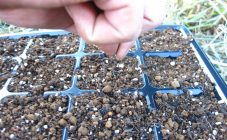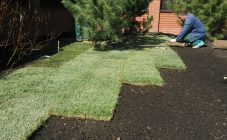Content:
Gardeners select various plants for their personal plot. Thuja for a hedge which is better - the question often puts people before a choice.
Description of culture
Tui belong to the Cypress family, are evergreens. The duration of their growth lasts from 50-100 years. The color of thuja can be blue, yellow, and green. Most species tolerate cold well. They are divided into low and tall species. Thuja grows well in wet and dry soil.
The structure of the tree resembles a spider web. Branches with sharp and juicy needles are directed upwards. Some plexuses look like scaly structures.
The tree must be protected from drafts. In winter, young thuja need to be wrapped up. Trees can be planted both outdoors and indoors and outdoors.
Thuja for hedges
There are about ten varieties of such trees. In Russia, climatic conditions differ in different regions. In the southern ones, you can pick up more varieties, as it is warmer there. For the northern and middle lane, you need to choose frost-resistant varieties. The most suitable varieties are Brabant and Smaragd. They are unpretentious and cold-resistant.
Hedge seedlings:
- Brabant. Western thuja with dense branching. Well suited for fencing and dividing space into zones. It grows both upward and in width (by 10 cm per year). The variety tolerates frost and heat well. The plant is unpretentious and does not require bright sun. Does not get sick when pruning and forming the crown. It grows well in both wet and dry soil. Better to plant on the sunny side.
- Danica. It grows in width and upward in approximately the same ratio, 60 centimeters. The plant is small in size, the branches are short, light, green, dense, soft, scaly in structure. Thuja is frost-resistant, but acquires a brownish tint.
- Emerald. The variety belongs to evergreen, decorative. Grows moderately, up to 20 centimeters annually. Reaches one and a half meters. Narrow-pyramidal thuja in shape. Pruning is rare, once a season. This variety is planted in areas with little snow.
- Columna. Tall and fast-growing tree, reaching six meters. Thuja is shaped like a cone. She tolerates a haircut painlessly. Any soil is suitable for her. Grows straight, branches are short, dense, diverge from the trunk at right angles. The color is rich green.
- Wagneri. The variety grows slowly and resembles an egg in shape. Reaches 3.5 meters in height. The branches are thin, neat, silvery-green in color. Growth is directed upwards. The soil must be selected fertile and moist. Loves open and sunny places.
- Globoza. Slow growing globular shrub. Reaches two meters. In the spring it takes on a light green tint, in the winter - brown. The branches of the tree grow densely, crisscross, directed upwards. The plant is shade-loving, can grow in arid places. Pruned once every 2 years.
When choosing seedlings for a hedge, you need to consider:
- Soil features;
- The influence of the sun;
- Climate.
Landing
Selection of seedlings
Young thuja should be selected so that the roots are with an earthen clod. Roots wrapped in burlap or metal mesh will do. But the best option is potted plants. They have a lush crown, and roots are developed, which are pruned 3 months before moving into open ground. This is how young suction processes are formed. They are planted from the spring to the onset of cold weather. Lumpy plants are planted in April - May.
Preparing the landing site
Areas without drafts and with groundwater located below 1 meter are chosen for growing. It should be planted away from large trees so that the young have enough nutrients. When planting several shrubs next to each other, so that they do not interfere with each other, you need to consider at what distance to plant thuja - this is 3-5 meters.
Soil preparation for seedlings
Clay or wet soil requires drainage:
- Crushed stone;
- Expanded clay;
- Sand;
- Broken brick.
The layer is 20-30 centimeters. Then fertile soil is poured into the pit.
You can make a soil mixture:
- 2 parts of sod or leafy land, 1 - peat and the same amount of sand.
- 2 hours of soil from leaves, sand, 1 hour - peat, 3 hours - humus.
- 3 parts of sod land, 2 - humus, 1 - sand.
Fertilizers are added to the mixture, for example, up to 100 grams of nitroammophoska.
Planting thuja
You need to plant with an earthen clod.
A landing pit is made from 0.6 to 1 meter. Depending on the volume of the roots, the diameter and depth of the hole will be 2 times larger.
A tree is placed in the prepared soil. The kidney should be at ground level. The plant needs to be watered. A growth stimulator can be added to the water: Epin, Kornevin.
Mulching is done with a layer of 5-7 centimeters. Choose for this: peat, compost, bark, wood chips.
Under a layer of mulch, the seedlings are protected from overheating in summer and from cold in winter, so it is easier to grow them. Then you need to water and spray the thuja once a week.
Scheme for planting hedges
In one meter increments, the hedge is planted in a trench. Its width is calculated: the distance between trees is 10-30 cm, depending on the size of the roots. Vegetable soil is poured at the bottom.
If the distance is more than a meter, then it is better to dig one hole under each seedling.
The thuja fence can be high and impassable (for example, in two rows and in a checkerboard pattern) and visually symbolic (in one row and with a distance of up to 1.5 meters).
Types of hedges:
- High. Up to 4 meters. Cut from the side 2 times a year. The tops are trimmed when the tree grows to its maximum and merges in a plane with others.
- Medium high. Up to 2 m. Width - up to a meter. The planting scheme is two-row. The intervals between seedlings are up to half a meter. Haircut once a month or on demand.
Picture 1 Scheme of planting a hedge
- Low. Height - up to a meter. Any landing patterns. Haircut on demand.
Planting Brabant and Smaragd varieties
Hedges are very beautiful and useful for a home garden.
Features of planting a hedge from Thuja Brabant:
- It grows quickly - 0.5 meters per year;
- When cutting 2 times per season, a dense and fluffy crown is obtained;
- When planting with a meter step, a thick and impassable hedge will grow;
- For double-row hedges, the step is two meters. Staggered arrangement;
- If large varieties are planted, then you need to retreat up to 5 m;
- Loves illuminated areas;
- It tolerates moisture well.
Brabant is unpretentious in care, it can be planted in many areas, including the Moscow region.
Features of planting thuja Smaragd:
- Grows slowly;
- Haircuts are rare;
- The distance between the thuja Smaragd when landing is 0.8 meters;
- It tolerates shade and frost well, even suitable for the Urals;
- The soil is required to be drained.
If all planting conditions are met, a very beautiful and lush hedge can be grown.
